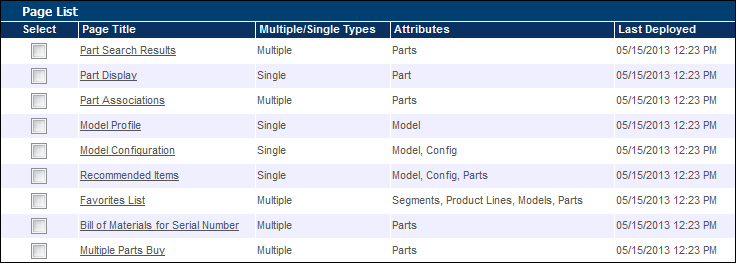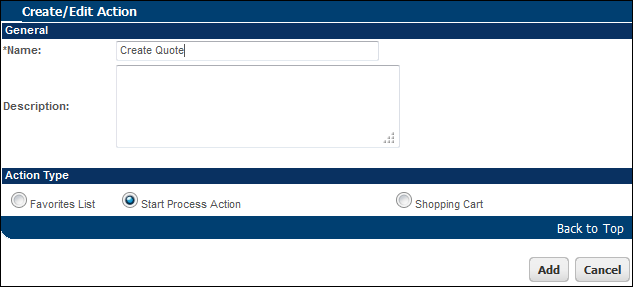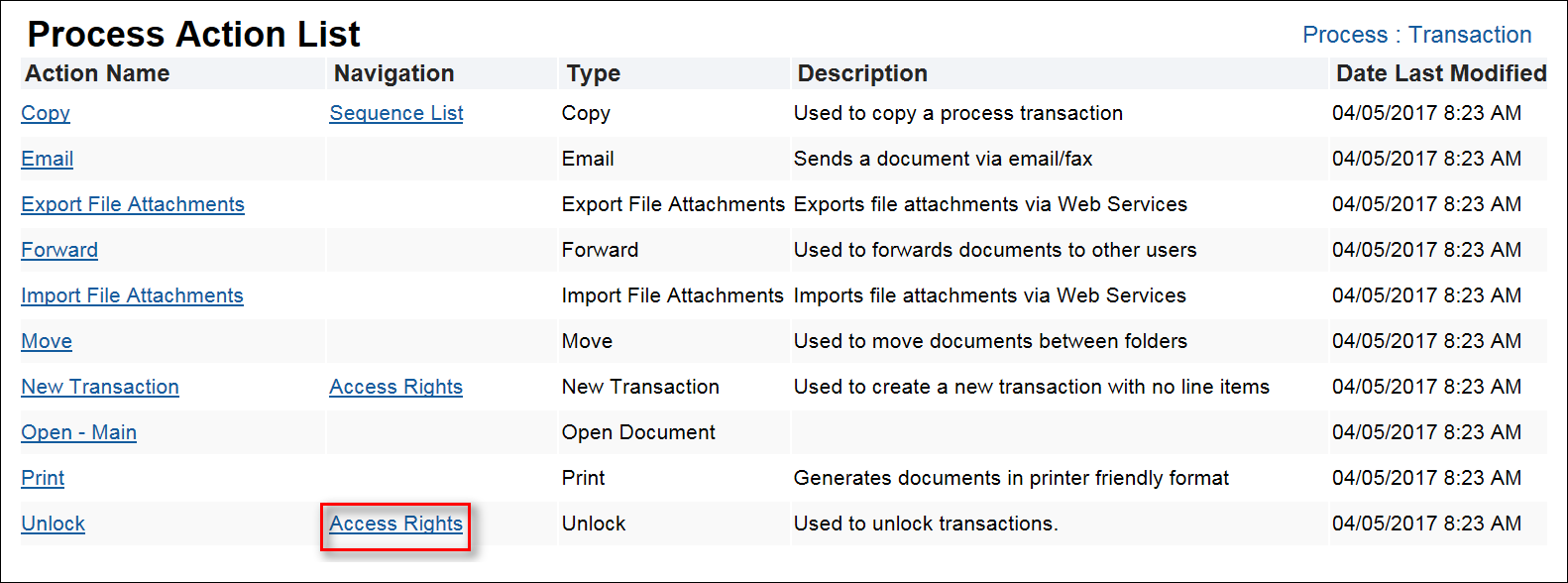Commerce Process Invocation
Overview
Process Invocation creates buttons that link product catalog pages with Commerce Processes. You can generate buttons that either start a Commerce Process, open the Shopping Cart, or move items to the Favorites List.
If Commerce Processes have already been created, you can generate process invocation buttons one at a time for each catalog page. Similar to other commerce components, process invocation buttons are created in an active, pending state.
Invocation Actions can be created on the following Catalog Pages:

Administration
 Add a Process Invocation Action
Add a Process Invocation Action
- Navigate from the Admin Home Page > Commerce and Documents > Process Invocation > Select a Catalog Page.
- Click Add.
-
Enter a Name for the action that will display on the button on the user-side.
This is a required field and cannot be left blank.
- Enter a Description for the action (button).
- Select an Action Type:

- Click Add.
 Add a Process Invocation Rule
Add a Process Invocation Rule
- Navigate from the Admin Home Page > Commerce and Documents > Process Invocation > Click on a Catalog Page.
- Choose Rules from the navigation drop-down of an action, then click List.
- Click Add.
- Enter a Name for the rule. This is a required field and cannot be left blank.
- Enter a Description of the rule.
- Select a Rule Type:
- Simple: Simple rules will take users to a specific Commerce Process, which you'll choose in the next step.
- Advanced: Click Define Functions to open a BML Editor and write a BML Script for the rule.
When creating a new rule, the only option available is Simple. The Advanced option is available only after the new rule is saved.
-
Select the radio button corresponding to the Target Commerce Process you want to begin when the user clicks the action button.

 Set User Access Rights for a Process Invocation
Set User Access Rights for a Process Invocation
- Navigate from the Admin Home Page > Commerce and Documents > Process Invocation > Click on a Catalog Page.
- Choose User Access Rights from the Navigation drop-down of an action, then click List.
- Choose a Company Type and a User Type from their respective drop-downs.
- Click the greater than symbol ( > ) to add the Company Type: User Type set to the Access Rights field.
-
If required, repeat Steps 3 and 4 for multiple entries.
Click the less than symbol ( < ) to remove Company Type: User Types combinations.
-
Click Add, Apply or Update to save changes.

 Deploy Catalog Pages
Deploy Catalog Pages
- Navigate from the Admin Home Page > Commerce and Documents > Process Invocation.
- Select all the Catalog Pages that should be deployed.
- Click Deploy.
Notes
Buttons are created in an inactive, pending state. After a button is complete, meaning both user types and rules have been created, the button can be deployed to become active on Catalog pages.
In order for a button to be visible outside of administration, the button must be deployed. The deploy process can be performed for individual Catalog pages.
A Commerce Process must already exist as you create the Processes that the buttons invoke.
Action types cannot be changed after the button is deployed.
Related Topics
 See Also
See Also

![]() Add a Process Invocation Action
Add a Process Invocation Action
![]() Set User Access Rights for a Process Invocation
Set User Access Rights for a Process Invocation








